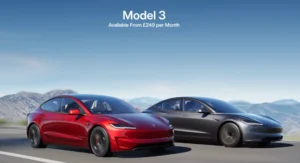California, New York, and New Jersey’s new efforts could boost EVs beyond niche status
Three US states announced major investments in charging infrastructure for electric cars on Thursday. In total, California, New York, and New Jersey will put $1.3 billion on the table in the coming years to help chip away at one of the biggest barriers standing in the way of widespread EV adoption.
California’s Public Utilities Commission approved up to $738 million worth of projects over the next five years, the agency announced. Southern California Edison and the Pacific Gas and Electric Company (PG&E) will spend up to $343 million and $236 million, respectively, to build charging infrastructure that will support thousands of medium or heavy-duty vehicles at around 1,500 locations throughout the state. PG&E will spend another $22 million building 234 DC fast-charging stations at around 50 different sites throughout the state.

The US Department of Energy says that more than 80 percent of EV charging currently happens at home, so some of the focus of California’s investment will be on helping support home charging as well. San Diego Gas and Electric will spend up to $137 million on its “Residential Charging Program,” allowing the utility to offer rebates for up to 60,000 customers who want to install Level 2 chargers in their homes.
In New York, the governor’s office announced a pledge of up to $250 million through 2025 to its electric vehicle expansion initiative, EVolve NY. The New York Power Authority will work with the private sector to install up to 200 DC fast chargers “along key interstate corridors” with the goal of making them available every 30 miles, and it will also bring them to urban areas as well, including at or near New York City’s two major airports. Meanwhile, New Jersey’s biggest utility owner Public Service Enterprise Group (PSEG) announced a $300 million pledge to build out up to 50,000 charging stations along highways, in residential areas, and at workplaces.
All three investments are some of the biggest these states have committed to regarding building EV charging infrastructure. But while they might not directly affect the other 47 states, there’s reason to believe this news could help influence the spread of EVs around the country, according to Karl Brauer, executive publisher of Autotrader and Kelley Blue Book.
We’re going to see a series of all-new electric vehicles hit showrooms over the next two years. These new models will offer greater range than we’ve seen in past EVs, but getting electric vehicles past 1 percent market share will still prove challenging because range anxiety remains a concern for most consumers
“If states like California, New Jersey, and New York can support these new EVs with an expanded charging infrastructure the combination could, finally, push electric cars beyond the niche status they’ve been stuck in for over two decades.”
Max Baumhefner, senior attorney for the Natural Resources Defense Council, shared a similar sentiment. California, in particular, he said, “has sufficient market power to drive change nationally, on both the policy, business, and technology front. Policy-makers and utility CEOs across the nation will take notice of the scale of this investment.”
“There are few industries that can match Big Oil’s deep pockets and political influence. The electric industry is one of them,” Baumhefner added. “Today’s authorization of a $738 million investment by three electric utilities [in California] marks the beginning of new era of welcome competition for the transportation market.”
That power that California wields has come under fire in recent months as the federal government, working through the Environmental Protection Agency and the Department of Transportation, tries to loosen vehicle emissions standards set by the Obama administration. In particular, California has the power to set its own vehicle emissions standards, thanks to a Clean Air Act waiver it obtained in the 1970s. The White House and the EPA are considering a direct confrontation with the state over that status, according to various reports, because any attempt to lower the national standards could cause chaos in the marketplace if California’s remain higher than the ones set by the DOT.





